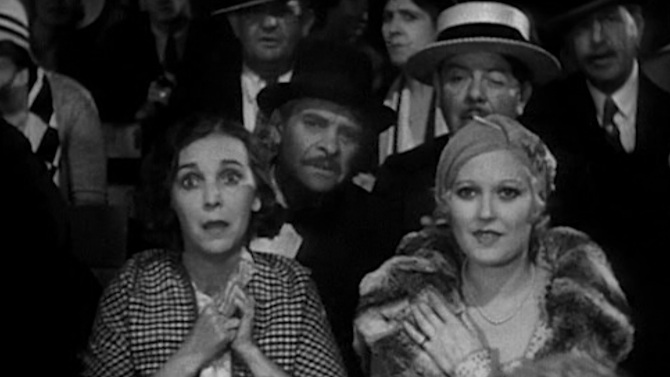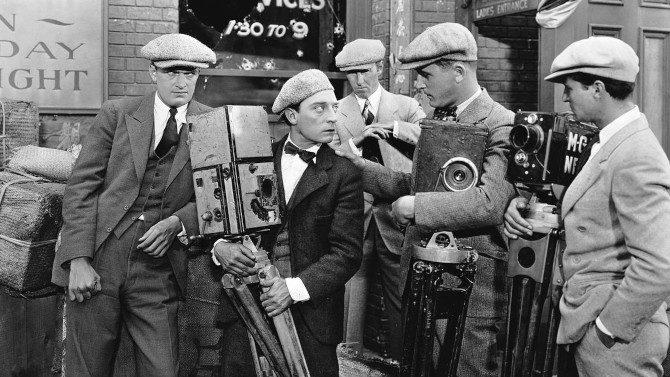
Plights, Camera, Action
Often deemed to be the last classic film made by the great Buster Keaton, The Cameraman (1928) was the final time the silent legend would have anything close to full creative control over one of his own features... as he folded his independent studio to sign with Metro-Goldwyn-Mayer (MGM) – who promptly made him their third highest paid star. Though his future would soon turn very bleak, this first film with the new studio was his own idea.
-

Plights, Camera, Action
The CameramanFebruary 22, 2025Often deemed to be the last classic film made by the great Buster Keaton, The Cameraman (1928) was the final time the silent legend would have anything close to full creative control over one of his own features... as he folded his independent studio to sign with Metro-Goldwyn-Mayer (MGM) – who promptly made him their third highest paid star. Though his future would soon turn very bleak, this first film with the new studio was his own idea.
-

Johnny on the Spot
Johnny StecchinoJanuary 11, 2025There is no doubt that Roberto Benigni will forever have his name etched in the annals of film history after his Academy Award winning film Life is Beautiful – which took home Best Foreign Language Film, Best Score (for Nicola Piovani), and brought forth a most special moment when Benigni climbed atop the seats of the theatre to accept his Best Actor award. Yet, it is a bit of a shame that some of his pre-1997 works are lesser known outside of his native Italy. Case in point, the comedy Johnny Stecchino, circa 1991. Co-written (along with Vincenzo Cerami), directed and starring Benigni, he plays the titular character as well as a near identical lookalike of the man (who is actually our protagonist). Here’s a quick translation – Stecchino means toothpick. So, to explain, Dante is a charming yet rather simple bus driver (who is also trying to pull a disability scam with the government), when one day, he luckily. . . or perhaps unluckily, almost gets run into by a beautiful woman named Maria (Nicoletta Braschi – Benigni’s real life wife) – who seems to be immediately intrigued by the man. As she would exclaim – “Santa Cleopatra!”
-

Voodoo, and Zombies, and Ghosts, Oh My
The Ghost BreakersOctober 31, 2024Beating the famed comedy duo of Abbott and Costello to the horror comedy circuit both one and two years prior to their 1941 classic Hold That Ghost, Bob Hope released The Cat and the Canary in 1939, following it up in quick succession (just eight months later) with The Ghost Breakers in 1940 – it was originally a play written by Paul Dickey and Charles W. Goddard (there are also two silent films from 1914 and 1922 based on it that are thought to be lost – the former being directed by Cecil B. DeMille). Directed by George Marshall, the mystery infused horror comedy follows a socialite, Mary Carter (Paulette Goddard), who has learned on a stormy New York night that she has inherited a supposedly haunted castle on a secluded Cuban isle ominously named Black.
-
Comedy Team, Female Style
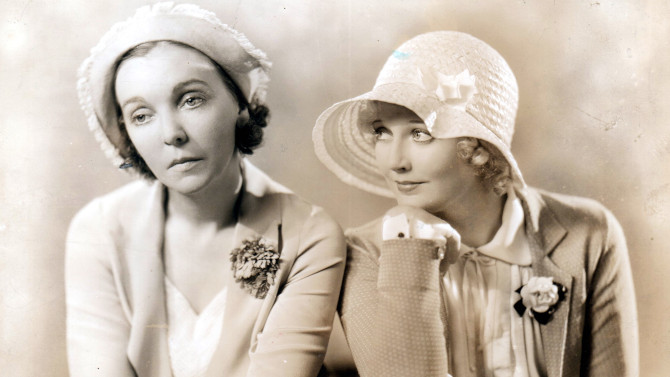 Let's Do ThingsCatch-As Catch-CanMarch 3, 2024
Let's Do ThingsCatch-As Catch-CanMarch 3, 2024With the massive success of Laurel and Hardy, who producer Hal Roach had paired together after signing them separately in 1926 (they would remain with his studio until 1940), the man had the bright idea of creating a female counterpart duo, bringing together Zasu Pitts and Thelma Todd. The team would make seventeen popular shorts from 1931-33, their first two, Let’s Do Things and Catch-As Catch-Can, looked at here today. Like all good comedy teams, you have two very different character types. Zasu comes across as the slightly depressed, nervous and fretful brunette, while Thelma is a much more vibrant and colourful blonde dame. . . the former’s desperation often dragging her more put together friend into rather unorthodox situations. In Let’s Do Things, they find themselves as employees selling music for a giant department store... while looking for a way out of their dead-end jobs.
-
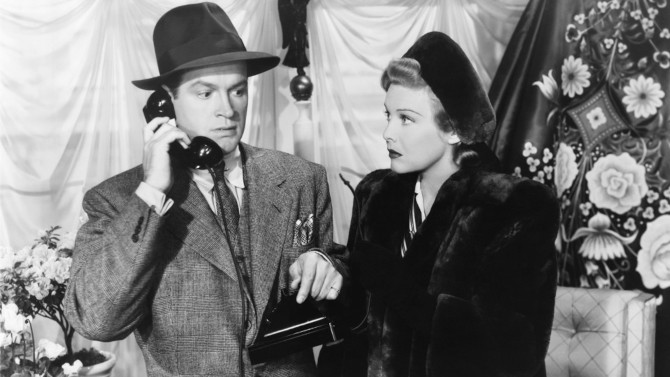
Wartime Blonde Bombshell
My Favorite BlondeFebruary 22, 2024Comedic war-tinged movies were all the rage in Hollywood during World War II... a way to ease the tension while keeping morale up. Think Charlie Chaplin’s The Great Dictator (1940), Abbott and Costello’s quasi trilogy of Buck Privates, In the Navy, and Keep `Em Flying (all of which were released in 1941), Ernst Lubitsch’s To Be or Not to Be (1942), as well as today’s feature, the Sidney Lanfield directed, Bob Hope starring My Favorite Blonde (also 1942). A wartime crime caper woven within a Bob Hope vehicle, Karen Bentley (Madeleine Carroll – The 39 Steps), is a British secret agent who is given the unenviable task of delivering a cipher after her partner is murdered by a ruthless group of German spies led by Madame Stephanie Runick (Gale Sondergaard – who was also in The Cat and the Canary, Never Say Die, and Road to Rio with Bob Hope).
-
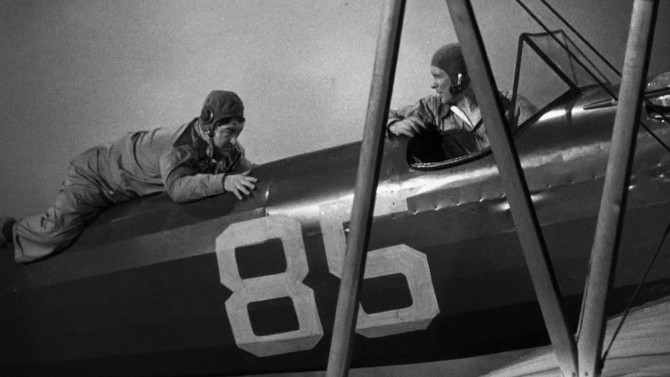
Flying High!
Keep 'Em FlyingJanuary 30, 2024If you’ve ever seen anything from the comedy team of Abbott and Costello, you’ll know that it is rather rare to find anyone who will take up the screen as much as good old funny man Lou... that is, unless he’s paired with comedienne Martha Raye – there’s a reason she’s known as “The Big Mouth”. In Keep `Em Flying (1941), they would share the silver screen for the first and only time... but Lou had his work cut out for him, as she plays twins. The team’s fourth starring movie released in just ten months (and the third military movie to keep spirits high during World War II), all four were manned by Arthur Lubin (their next film, Ride `Em Cowboy would be his last with the duo), a steady hand that helped keep the boys in line.

